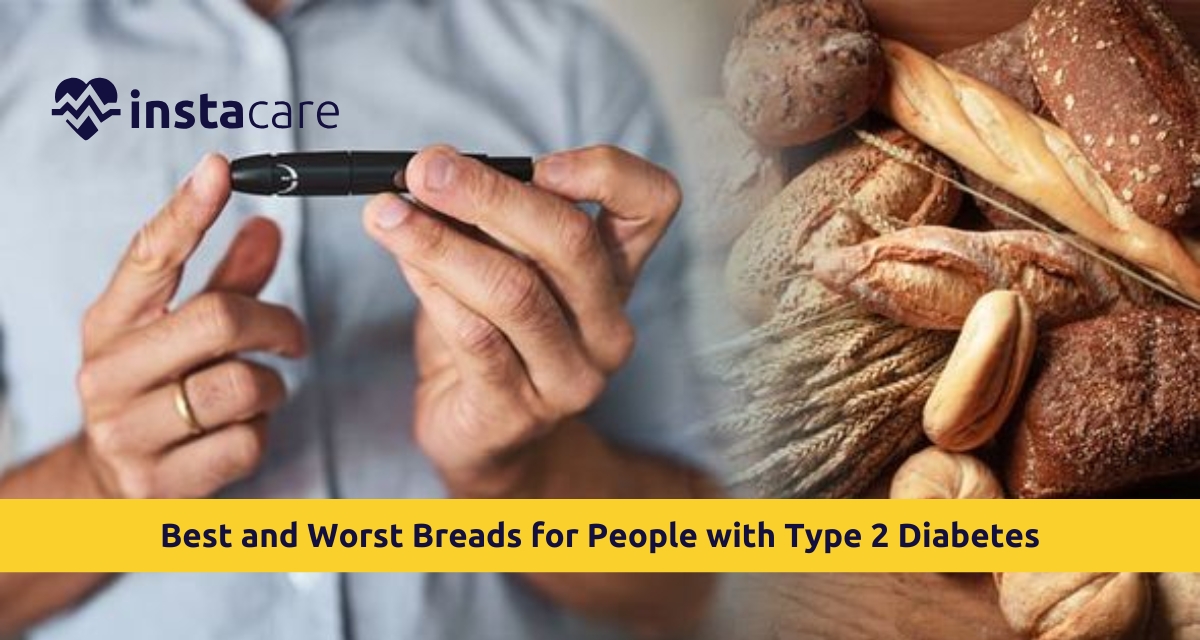Carbohydrate intake has to be monitored in type 2 diabetes and a conscious diet does this. Possibly the most dietary staple that can create the biggest stir as far as blood sugars are concerned is bread. A vital component of surrogate control understands which breads are good, and which are bad for controlling blood sugars. This paper will then inform the subscribers the best and worst bread for people with type 2 diabetes; the type of breads, the glycemic index and the nutritional value of bread will be provided.
Understanding Carbohydrates and Glycemic Index
First off, some basic knowledge needed to progress to the
type-specific breads section is explained: This study focused on carbohydrates
and glycemic index. Since carbohydrates get decomposed quickly into glucose
these affects the blood sugar. GI stands for glycemic index it means which
quantity increase it would cause in the blood sugar level of a food item
containing carbohydrates.
Low GI Foods
A food will be termed low if it has a GI of 55 or less; thus, these foods are digested slowly, and the blood sugar increases gradually.
- Low to Medium GI Foods: Foods that have a GI between 56 and
69 cause a little rise in blood sugar.
- High GI Foods: Foods that have a GI of 70 and above are
digested rapidly and result in a high blood sugar level.
- Type 2 diabetes needs to be told to take low to medium GI food.
Recommended Bread for the Patient Type 2 Diabetes
1. Whole Grain Bread
Description: This bread is made from flour that contains the whole grain kernel that includes both bran and endosperm.
Advantages
- High in Dietary Fiber: A high dietary fiber causes slow
digestion and maintains steady blood glucose levels.
- Nutrient Dense: The vitamins that are included in it,
B-group vitamins as well as vitamins iron as well as magnesium.
- Low GI: Most of the breads that claim to be 100% whole grain
contain a GI less than the white bread.
- Recommended: To get the benefit of whole grain, 100% wheat grain should be the first incorporation in the bread of your choice.
2. Ezekiel Bread
Description: Generally, Ezekiel bread contains germinated
whole grains and legumes including wheat, barley, lentils and soybeans.
Benefits:
- Nutrient Dense: Sprouting increases nutrient
availability and is rich in protein, fiber, and essential amino acids.
- Low GI: Generally, it has a lower GI, so it is less likely
to raise blood glucose.
- Digestive Health: It contains high amounts of fiber for
digestion and gut health.
- Recommendation: Use organic Ezekiel bread to obtain the highest quality nutrient density.
3. Sourdough Bread
Sourdough bread is made with a natural fermentation process
involving lactobacilli and yeast.
Advantages:
- Lower Glycemic Index: It also slows the increment of the
blood glucose index of the bread through the process of fermentation.
- Increased Nutrient Absorption: Fermentation also divides
gluten and physic acids, so as to improve the absorbency of the body.
- Health in Diet: They have been marketed extensively as a
prebiotic that is beneficial to have a healthy large intestine.
- Advice: Go for rye bread to maximize grain and nutrient intake.
View More: How Is Diabetes Diagnosed
4. Rye Bread
Description: Rye bread is prepared using rye flour, which
may be denser than wheat bread.
Advantages:
- High Fiber Content: Rye bread is generally richer in fiber
than white bread that maintains blood sugar levels.
- Lower GI: Rye bread is generally of low glycemic index,
meaning the blood sugar increase slower.
- Satiety: The dense nature of rye bread makes you full for a
longer time.
- For general well-being purposes, utilize 100 percent rye bread or even pumpernickel bread.
5. Oat Bread
The actual product that is prepared from the combination of
oat flour or whole oats is known as oat bread. This is more nutritional than
the usual bread.
Benefits:
- Beta-Glucans: These foods contain soluble fiber and it can
be thought that can lower cholesterol and help raise insulin levels.
- Nutrient rich: Many oat breads are energy foods, or edibles
that are good sources of nutrients.
- Low GI: Most oat bread tends to have a much lower glycemic
index from white bread.
- Recommendation: Choose products with whole oats or oat flour as the first ingredient.
Worst Breads for People with Type 2 Diabetes
1. White Bread
White bread is produced with wheat flour that has no bran
and germ. And to get this flour, the original wheat grain contained in it has
no bran and germ at all.
- High Glycemic Index: It has high GI which elevates blood
glucose level shot through in no time.
- Less Nutrient Content: White bread is almost nutrient
depleted since it undergoes refinement to pass under.
- Eating more: Since it barely carries any fiber, in some cases, it would never keep you full enough. This will cause the same over-indulging, so avoid sweet bread as far as possible and consume the whole-grain variant sometimes.
2. Sweet Breads
- Sweet breads-They are very refined bread, mostly prepared
from white flour and have added sugars.
- Sugar Content: They have added sugars and thus produce high
blood sugar levels with huge spikes.
- Dietary Fiber: Normally low in dietary fiber. Therefore,
less satiety and increased cravings.
- Caloric Density: Since sweet breads are dense in calorie and
hence it impacts the weight loss of the individuals.
- Recommendation: Avoid or reduce the intake of sweet breads.
3. Bagels
Description: Traditionally, bagels contain refined flour,
and it is very dense.
Disadvantages
- High Glycemic Index: Traditional bagels have a high GI which
makes blood sugar spike quickly.
- Size: Bagels are very large so in one sitting, one
tends to consume much more carbs.
- Low in Fiber: Unless made with whole grains, they hardly
contain enough fiber.
- Recommendation: If you like bagels, then you should purchase whole grain or whole wheat bagels and decrease your consumption of it.
4. Croissants and Pastries
Description: Croissants and all those type of bread are
generally made of white flour with lots of butter.
Disadvantages:
- High in saturated fats and sugars, and by its nature,
comprises additional sugars, which are more prone to increase calorie
consumption.
- Low in nutrition: Mostly low in fibers and proteins, which
gives a spiking effect for blood sugar.
- High in Glycemic Index: Similar to white bread and other
similar foods, those give a sudden increase in glucose levels.
- Recommendation: Reduce the intake of the consumption of pastries and croissants by healthier numbers.
5. Gluten-free Breads Some types
While some of them are made with refined flours like rice or
tapioca they are recommended for people with celiac disease.
- High GI: Majority of the gluten-free breads contain higher
GI that leads to variation of blood sugar levels.
- Poor in Fiber: Mostly lacking in fiber, which means
dissatisfaction and also might have the adverse effects on someone’s gut?
- Nutrient-Deficient: They are going to lack the nutrition
intake associated with whole-grain bread.
- Recommendation: In case one need gluten-free bread, use
those containing whole grains or seeds in it for maximum nutrient purposes.
Conclusion
Breads may only find a place in the diet of someone with
type 2 diabetes. In that realm, there have to be choices and considerations of
what should go in. Normally those will include whole grain breads, Ezekiel,
sourdough, rye and oat breads for that low glycemic index as well as fiber.
Conversely, white bread, sweet breads, bagels, croissants and even most of the
gluten-free options will be limited.
The right choice over the bread you consume can make you
enjoy your meals without such levels of high blood sugar. In case you require
any dietary advice on your condition, always see a healthcare professional or
registered dietitian.
Please book an appointment with the Best Diabetologist in Lahore, Karachi, Islamabad, and all major cities of Pakistan through InstaCare, or call our helpline at 03171777509 to find a verified doctor for your disease.

